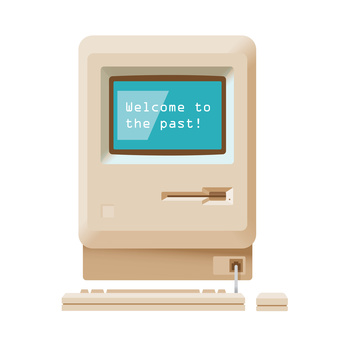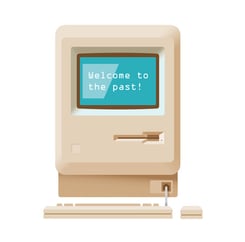3 min read
Scientist Discovered Why Most Traders Lose Money – 24 Surprising Statistics
“95% of all traders fail” is the most commonly used trading related statistic around the internet. But no research paper exists that proves this...

 Should you really backtest your trading strategy and will it provide accurate information about what you can expect from live trading? Most traders will be left clueless why their trading strategy performed so well during back-testing, but failes miserably in live-trading.
Should you really backtest your trading strategy and will it provide accurate information about what you can expect from live trading? Most traders will be left clueless why their trading strategy performed so well during back-testing, but failes miserably in live-trading.
The following article provides 6 of the most commonly made mistakes and misconceptions about back-testing, why it is mostly useless and how to correct for the major shortcomings.
With conventional back-testing software, you can buy and sell with one mouse click, move forward or backward in time as fast as you want, pause for a comfort break, or watch some TV while markets stand still.
Do you sometimes push the wrong button and move one candle too far and see that it would’ve been better to exit your trade on the previous candle? It’s easy to go back during back-testing, but try to convince your broker that you pressed the wrong button and actually intended to exit your trade on the last candle!
The danger lies in ruining your trading style and the way you approach trading. Your mistakes while back-testing and demo-trading will have no effects on your income and your trading account and, therefore, traders tend to approach trading too sloppy after extended periods of back-testing.
Carelessness and undisciplined back-testing behavior will carry over into live-trading. Needless to say that your live trading performance will be quite different from what happened during your back-testing.
If you are a trend trader, your trading strategy performs poorly in range bound markets and you might not get a single trade for weeks if markets keep on ranging. While back-testing, this is no big issue; you can just fast forward a few weeks until volatility picks up and markets start trending again.
Discipline, ‘sitting on your hands’ and patiently waiting for setups is a key characteristic of professional traders and what separates them from impulsive and consistently losing amateurs. Cherry-picking when back-testing is easy, but this is not how trading works.
A key factor for the success of a trader is the ability to avoid premature and knee-jerk decisions. When traders are in a trade, watching price move up and down in real time (with money on the line) creates anxiety and often leads to impulsive and emotional decisions. Just think about all those times when you prematurely exited a trade because you were afraid of giving back too many profits during pullbacks, just to see that staying in a trade would have been the better thing to do.
Backtesting eliminates emotionally caused impulsive trading decisions; especially when using the candle-by candle backtesting method. It might be boring, but if you want to make back-testing as valuable as possible, use real-time market speed; speed up the movement of price as little as possible. It might be boring and dull but it’s the only way of getting as close as you can get to train yourself for real markets.
We’ve all heard people claiming that they’ve tested 30 or 40 years of charts for their system. There are only a few things that are more useless and time-wasting as testing decades of historical price data. Markets are living organisms that constantly evolve and change; volatility, manifestation of price, the way it reacts to support, resistance and other tools constantly changes.
Together with the previous point, the best you can do for yourself is to test as much as 1 or 2 years of historical data and replay price in real-time. Once you’ve tested 1 or 2 years of data you should be able to judge whether your system has a promising outlook or not. Then it’s time to apply it to live markets.
Every day a variety of news items are being released, politicians and other officials hold speeches, companies publish financial statements and expected and unanticipated political and geopolitical events take place. These news events are often the cause of major price movements, unexpected spread developments or even the beginning of new trends. When you back-test your trading strategy, you are unable to see what has happened during that day, why prices suddenly spiked up, or took a sharp dive. Being unable to tell why prices have moved as they did is one of the major disadvantages in back-testing. Therefore, it’s very important to not overestimate the results of your back-testing. Eventually, you have to apply your trading method to live markets where you can know, to some degree, what is causing prices to move.
This effect is probably the biggest reason why your back-testing doesn’t have the effect you wished for. Usually you just pick one forex pair, one stock or one commodity, select the timeframe you want to back-test and then go for it. The one important thing you forget is that there is nothing like an independent financial market. If you trade the EUR/USD, you have to pay attention to what is happening on the DAX and the S&P, monitor interest rate decisions and the economies of the Euro-Zone, the United States and their trade partners – just to name a few influencing factors. The same is true if you specialize in stocks; you cannot just blank out the whole financial world, pick one stock and a single timeframe and test some trade pattern on it. Hopefully by reading these lines, you will see how absurd this way of back-testing is actually.
Ideally you should use professional back-testing software that lets you simultaneously monitor different instruments and markets and flip through timeframes at the same time.

3 min read
“95% of all traders fail” is the most commonly used trading related statistic around the internet. But no research paper exists that proves this...

3 min read
Trendlines can be great trading tools if used correctly and in this post, I am going to share three powerful trendline strategies with you.

3 min read
Choosing the right trading journal is essential for traders wanting to analyze performance, refine strategies, and improve consistency. In this...